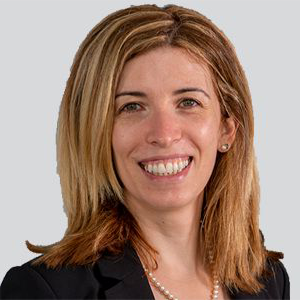Video
Technetium Pyrophosphate Scan Benefits
John L. Berk, MD: Doctor Desai, I’d like to move along to get your views of technetium pyrophosphate scans, what the benefit is, and also what are the vagaries we’re learning now.
Akshay S. Desai, MD, MPH: I think technetium pyrophosphate scanning, bone scintigraphy, if you will, has really been a wonderful addition to the diagnostic armamentarium, particularly for patients with TTR [transthyretin] amyloidosis. We learned that in many patients getting bone scans for other indications, the heart would “light up” occasionally. It’s become clear that a large proportion of patients who have positive cardiac uptake of technetium pyrophosphate in particular are patients in whom there is important involvement with cardiac amyloid. I think that the early reports suggested that this testing was fairly specific for the diagnosis of TTR amyloid, and we’re learning that a proportion of the cases with AL [immunoglobulin light-chain amyloidosis] may also light up on that scan. So I think it’s important that just having a positive scan result doesn’t in and of itself confirm the diagnosis of TTR amyloid, and we need to do the appropriate investigations for serum light chains in order to exclude a monoclonal protein that might also be present in patients with a positive scan result.
I think the presence of a negative serologic workup for amyloid with light chains and immunofixation, and a positive technetium pyrophosphate scan, really does amount to pretty compelling evidence for a diagnosis of TTR amyloid and has been enough in some of the pivotal trials in order to initiate therapy with drugs like tafamidis.
John L. Berk, MD: Doctor Hanna, with those words on technetium pyrophosphate scanning and comments you made earlier, what is the prevalence of TTR? What are we missing in particular cohorts that have become a clearer—whether they are heart failure clinic or TAVR [transcatheter aortic valve replacement] experience?
Mazen Hanna, MD: As far as prevalence is concerned, the most important point I’ll make is we don’t know the true prevalence. We don’t know the true denominator of how many people out there have TTR amyloid cardiomyopathy. However, there are certain cohorts that we’ve learned from. There was a study in Spain that looked at patients with heart failure with preserved ejection fraction, who were hospitalized with acute heart failure as an inpatient and those who had a wall thickness greater than 13 millimeters. I believe it was 13 or 14 millimeters. They decided to consecutively scan over 100 patients with this increased wall thickness and acute and chronic HFpEF [heart failure with preserved ejection fraction] and found that 13% actually came back positive. Some of them were confirmed with endomyocardial biopsy, but not all, suggesting that at least 10% of these hospitalized patients with HFpEF who have some increased wall thickness, are actually walking around with a diagnosis of cardiac amyloidosis.
The TAVR study from Columbia that Ron mentioned took consecutive older patients, over the age of 65, who were coming for a TAVR evaluation, and they routinely did technetium pyrophosphate scans on these patients, along with lab work to exclude AL. They found that 16% of these patients (again, not all biopsy proven) had diagnostic criteria for a positive scan, suggesting that they have cardiac amyloidosis, and they were wild type. I should say that in the previous study I mentioned, they were wild type.
So, between the TAVR population coming in for evaluation, between the hospitalized patients with acute and chronic HFpEF, you already see 13% to 16%. What we don’t know is in outpatients with chronic heart failure with preserved ejection fraction, what the percentage is. But a lot of the reason these trials, as Dr Desai said, may have been unsuccessful in patients with heart failure with preserved ejection fraction, is because up to 10% of these people could have this diagnosis.




